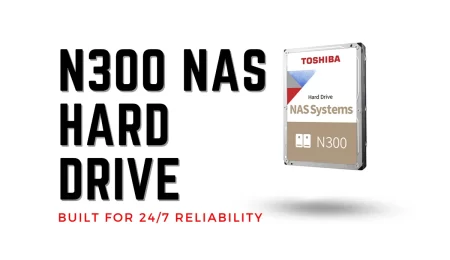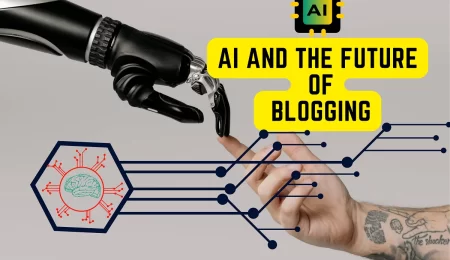Infographic Writing: The Art of Communicating Visually
Infographic Writing: In today’s world of digital media, visual content is gaining more and more importance. Infographics are one of the most popular forms of visual content as they help to simplify complex data and present it in a visually appealing and easy-to-understand manner. In this article, we will explore the art of infographic writing and how it can help to communicate complex information effectively.
The Scope of Infographic Writing
Discover the vast scope of infographic writing and how it can help you convey complex information in a visually appealing manner. Read on to learn more about this creative medium and how it can benefit your business.
Introduction
In today’s fast-paced world, where information overload is a common phenomenon, people are looking for more innovative ways to communicate effectively. Infographic writing is one such medium that has gained immense popularity in recent years due to its ability to convey complex information in a visually appealing and engaging manner. With the rise of social media, infographics have become a powerful tool for marketers, businesses, and organizations to communicate their message to their target audience.
In this article, we will explore the scope of infographic writing and how it can benefit your business. We will cover everything from what infographics are, the different types of infographics, the benefits of using them, and how to create effective infographics that engage your audience.
Types of Infographics
Infographics can take many forms, and choosing the right type for your message is essential. Here are some of the most common types of infographics:
- Statistical Infographics: These infographics present data in a visual format, making it easier for the audience to understand complex statistics.
- Process Infographics: Process infographics depict a sequence of steps or events in a visual manner, making them ideal for explaining complex processes.
- Comparison Infographics: These infographics compare two or more sets of data, making it easier for the audience to understand the differences between them.
- Timeline Infographics: Timeline infographics are ideal for presenting historical data, project timelines, or product development cycles.
- Geographic Infographics: These infographics use maps to present data, making it easier for the audience to understand regional or global trends.
Benefits of Infographic Writing
Infographic writing has several benefits for businesses and organizations:
- Increased Engagement: Infographics are visually appealing and can capture the audience’s attention quickly, resulting in increased engagement.
- Improved Memory Retention: Visuals are easier to remember than text, making it easier for the audience to retain the information presented in the infographic.
- Increased Social Shares: Infographics are highly shareable on social media, making them an effective tool for increasing brand awareness and driving traffic to your website.
- Improved SEO: Infographics can help improve your website’s SEO by generating backlinks and social shares, increasing your online visibility.
Creating Effective Infographics
Creating effective infographics requires careful planning and execution. Here are some tips to help you create compelling infographics:
- Define Your Objective: Before you start creating an infographic, define your objective and target audience. This will help you determine the type of infographic to create and the information to include.
- Keep It Simple: Keep your infographic simple and easy to understand. Use visuals and text sparingly and avoid cluttering your design.
- Use High-Quality Graphics: Use high-quality graphics and images to make your infographic visually appealing and engaging.
- Ensure Accuracy: Ensure the data presented in your infographic is accurate and reliable. Use credible sources and cite your references.
What is an Infographic?
An infographic is a visual representation of information that combines text, images, and design to convey complex data in a simple and engaging way. Infographics can be used to present a variety of information, from statistics and data to processes and workflows.
Why are Infographics important?
Infographics are important because they help to simplify complex information, making it easier to understand and digest. They are also visually appealing and shareable, which makes them ideal for social media platforms where users are constantly scrolling through their feeds.
How to Create Engaging Infographics
Creating engaging infographics requires a combination of design and copywriting skills. Here are the steps to follow:
1. Choose a Topic
The first step in creating an infographic is to choose a topic. The topic should be relevant to your business and your target audience. It should also be something that can be presented visually.
2. Research
Once you have chosen a topic, you will need to research the data and information you will include in the infographic. Make sure the information is accurate and from reputable sources.
3. Create a Wireframe
A wireframe is a rough sketch of the layout of the infographic. This will help you plan out the design and placement of the information.
4. Design
Once you have the wireframe, you can begin designing the infographic. Use colors, fonts, and graphics that are consistent with your brand’s style and tone.
5. Write Copy
Once the design is complete, you will need to write the copy. Keep the copy concise and focused on the main points. Use headings and subheadings to break up the information into sections.
6. Edit and Proofread
Once the infographic is complete, be sure to edit and proofread the copy for spelling and grammar errors.
7. Share
Once the infographic is complete, share it on your website, social media platforms, and other relevant channels.
The Art of Infographic Writing
Creating an effective infographic requires a careful balance between design and content. The following are some tips for creating an effective infographic:
1. Define Your Purpose
Before you start creating your infographic, it’s important to define your purpose. Ask yourself what you want to achieve with your infographic and who your target audience is. This will help you to create a focused and targeted infographic that resonates with your audience.
2. Choose Your Data Wisely
When selecting data to include in your infographic, it’s important to choose wisely. Make sure the data is relevant and supports your overall message. Avoid including too much data, as this can overwhelm your audience and detract from your message.
3. Create a Visual Hierarchy
Creating a visual hierarchy is key to an effective infographic. Use visual cues such as color, size, and font to guide your audience through your infographic. Make sure your most important information stands out and is easy to find.
4. Keep it Simple
Simplicity is key to an effective infographic. Avoid using too much text or cluttering your infographic with too many elements. Use visuals and concise text to convey your message in a clear and concise way.
5. Tell a Story
Infographics should tell a story. Use a narrative structure to guide your audience through your infographic and make it more engaging. Start with an attention-grabbing headline and use a logical flow to take your audience through your data.
Tools for Creating Infographics
Creating an infographic doesn’t have to be difficult. There are a variety of tools available that can help you create professional-looking infographics quickly and easily. Some popular tools include:
Canva
Canva is a popular graphic design tool that offers a wide range of templates and design elements for creating infographics.
Piktochart
Piktochart is an easy-to-use infographic maker that offers a variety of templates and design elements to help you create professional-looking infographics.
Venngage
Venngage is a powerful infographic tool that offers a range of design features and templates to help you create visually appealing and engaging infographics.
Still confused? Lets discuss this in stages:
The Planning Stage: Defining Your Objectives
The first step in creating an effective infographic is to define your objectives. What is the story that you want to tell? What information do you want to convey? Who is your target audience? Once you have answered these questions, you can begin to plan your infographic.
During the planning stage, it is essential to conduct research to ensure that the information you are presenting is accurate and up-to-date. This research can include analyzing data from reputable sources, conducting surveys, and interviewing experts in the field.
The Design Stage: Creating an Eye-Catching Design
Once you have defined your objectives and gathered your information, it is time to begin the design phase. This is where your creativity will come into play. You will need to create an eye-catching design that is both aesthetically pleasing and informative.
There are a number of design elements that you will need to consider, including color schemes, typography, and layout. You will also need to think about the types of charts and graphs that you will use to present your data.
It is important to keep in mind that your design should be consistent with your brand identity. This will help to ensure that your infographic is easily recognizable and reinforces your brand message.
The Writing Stage: Crafting an Engaging Narrative
In addition to an eye-catching design, your infographic should also have a compelling narrative. This narrative should be engaging and informative, and should tell a story that captures your audience’s attention.
When crafting your narrative, it is important to keep your target audience in mind. What do they care about? What questions do they have? What problems are they trying to solve? By answering these questions, you can create a narrative that resonates with your audience and drives engagement.
The Promotion Stage: Getting Your Infographic Seen
Once your infographic is complete, it is time to promote it. There are a number of ways to promote your infographic, including social media, email marketing, and content marketing.
Social media is one of the most effective ways to promote your infographic. By sharing your infographic on platforms like Facebook, Twitter, and LinkedIn, you can reach a wide audience and drive engagement.
Email marketing is another effective way to promote your infographic. By sending your infographic to your email subscribers, you can ensure that your target audience sees it and has the opportunity to engage with it.
Content marketing is a long-term strategy that involves creating valuable content that resonates with your audience. By creating high-quality content on a consistent basis, you can establish your brand as a thought leader in your industry and drive engagement over time.
Conclusion: Infographic Writing is Key to Engaging Your Audience
Creating an effective infographic is a powerful way to engage your audience and tell your story in a visually appealing way. By defining your objectives, conducting research, creating an eye-catching design, crafting an engaging narrative, and promoting your infographic, you can create a marketing asset that drives engagement and reinforces your brand message.
Conclusion
Infographic writing is an important skill for anyone who wants to communicate complex information effectively. By following the tips outlined in this article and using the right tools, you can create visually appealing and engaging infographics that resonate with your audience. At the heart of every successful marketing campaign is a compelling story. And one of the most effective ways to tell that story is through the use of infographics. Infographics are visual representations of data and information that are designed to be engaging and informative. They can be used to explain complex concepts, highlight important statistics, or simply tell a story in a visually appealing way.
However, creating an effective infographic is not an easy task. It requires a great deal of planning, research, and design expertise. In this article, we will explore the process of creating a successful infographic that tells your story in a way that captivates your audience and drives engagement.
Photo by Antoni Shkraba




Leave a Comment